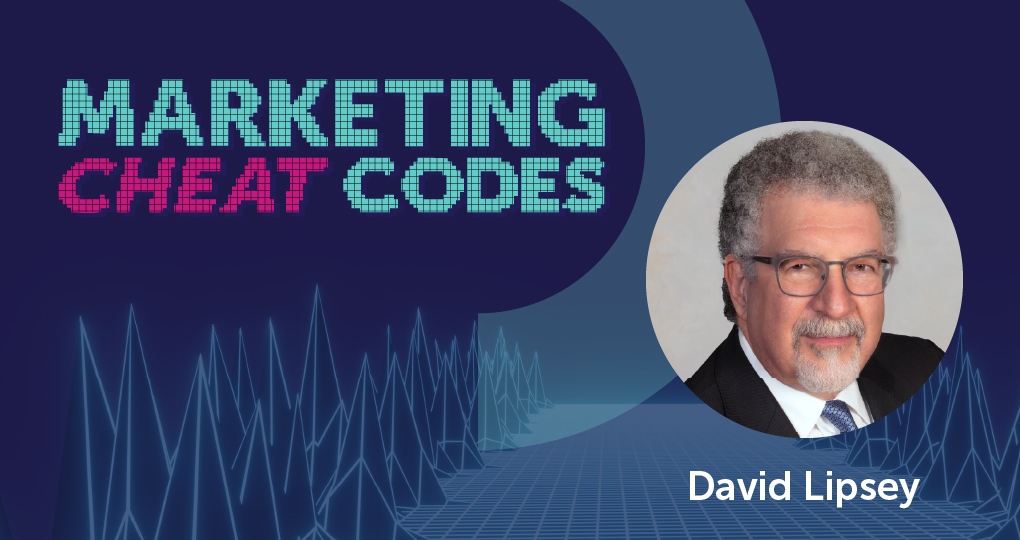What drives technology is more than just the code that goes into it. Most companies fail to integrate their new techstack, usually due to a lack of organizational buy-in or an existing tech bloat problem. In fact, a recent report by WPVIP states that “86% of marketing orgs cite complexity of integration is the biggest pain point…the biggest challenge is just getting everything to work together.” David Lipsey, Co-Director and Instructor at Rutgers University’s DAM Professional Certificate Program, dives into how DAM can set a taproot in marketing, spreading across the organization beyond its initial use case.
Skip to Topic:
- Going from Simple Content Storage to a DAM
- DAM is Not Just a Place to Park Marketing Content Assets
- DAM Should be Subservient to Marketing Goals
- Mastering DAM through Curiosity
6:00 – Going from Simple Content Storage to a DAM
Curiosity is a strange thing. What keeps people coming back for more? As marketers, that’s something we would really like to learn and master. When we think about building experiences that spark curiosity and where DAM fits in, it’s in this mission to bring folks continuously back to a certain level of engagement. Designing your DAM in a way that works as the backbone for all your marketing initiatives is also one of the things that can make implementing a DAM challenging. That’s because a DAMs strength is in its configurability, the differentiator of building a platform according to your business’s needs so you can get the most out of it.
“DAM always sets a taproot into an organization. It usually gets going in marketing, and we get the answer to a lot of questions. ‘Where’s my logos?’ ‘Where are the images we used last year?’ or ‘The video we just put out?’ We can take that content and transform it for any channel, like social media.
. . . we need a cheat code that helps a company come to realize that the organizational reporting line is fracturing. And that wonderful taproot (DAM) can help. We’re hearing now from CMO’s, who say, ‘Wow! DAM is doing what I want it to do.’
We’ve got better agency workflows, we can do our campaigns, we’re getting reporting, but I’m not here to manage the archives. It’s not my it’s not my budget. I love our archives, but this is an organizational change management issue. And one of the landscape issues going on in DAM right now is the transparency of the reporting line up DAM somewhere else.”
10:45 – DAM is Not Just a Place to Park Marketing Content Assets
If DAM isn’t just a place to store digital assets, then what exactly is it?
“Long ago, I had the idea that if we really do our job right in DAM, it’s going to be like the hot water boiler in the basement of the building. And that’s where DAM should be. It’s down there like electricity or hot water and cold water, heating whatever needs to be heated throughout the entire structure.
And if we do it right, somewhere up on the eighth floor, there’s somebody who’s the CMO going, ‘Look, I’ve got all my marketing assets.’ Then on the ninth floor, there’s somebody who’s running, manufacturing and product development, on the tenth floor for this corporation is social responsibility, on another floor there are the archives. And they each have control over that thing down in the basement.
I believe we need that kind of ‘behind the wall system’ of management to have that at the ready for anybody, anywhere with an understanding of risk and risk mitigation.”
12:30 – DAM Should be Subservient to Your Marketing Goals
Regardless of whether your organization is global brand, nonprofit, large enterprise or small to medium sized business, a DAM should work as the backbone of your business, tailored to your overall goals. Even with companies that don’t measure profit as their main objective, like charities or nonprofits, you can still find ways to make your DAM reflect your overall goals, such as the number of people you’ve served or helped. You can reverse-engineer a DAM that makes sense to you and your team.
“. . .DAM has to be subservient to what’s going on in marketing, whether it’s a website, an email campaign, e-commerce, whatever that might be, DAM should be subservient to manufacturing workflows.
. . . DAM should just be a shadow behind the scenes and work in support of our customer enablement, or if you’re not involved with certain metrics, like Goodwill, Red Cross, the Nature Conservancy, and religious organizations, these organizations who don’t make their mark and measure in life by profit and loss, but by people who are served. And DAM needs to, I believe, be with equal resilience and presence helping that part of our world which we all care about so much.”
23:40 – Mastering DAM through Curiosity
Implementing a DAM won’t get you where you want to be. It takes somewhat of a curious nature to explore all the things a DAM can do for your particular business. The goal of a DAM is to create an accurate representation for all languages, cultures, and business. This means taking into account regional differences such as dialects or how keywords from search engines might affect tagging internally within your organization’s products so they can be accurately labeled with relevant information at their fingertips, regardless of what region they’re being sold in.
“I’ve thought for a long time that if we have a well-formed digital asset, it is like a suspended hologram hanging around and emitting information about itself so that those who are curious can find me.
And I think just unpacking that in terms of, ‘Wow, how do I manage that?’ If I’m looking at metadata and there’s street slang for a product that your company is bringing to the market, I have to be sure that my prospective customers can find these slang terms and what they should be associated with.
. . . And I need to know that on my suspended object is emitting information that generates a workflow that allows me to know when there is curiosity in the marketplace translating to a sales opportunity that I’m able to embed that in DAM.”
Key Takeaways
Just because a tool is effective in some use cases, doesn’t mean it will hold true in every situation. Instead, a user should work backwards with a flexible tool, like a DAM, to build that silent engine in the boiler room that permeates throughout the company.
Keeping your main objective in mind, whether that’s selling more products, raising more awareness for food drives, or increasing participation for charity runs, the tools you use to achieve these ends should work in tandem with how your structure your workflows with your team. A DAM is an excellent tool that can be molded to fit in corporate structure, regardless of its goals.
Want more exciting marketing tips and tricks? Never miss out again! Signup to receive updates on the latest Cheat Codes episodes!


